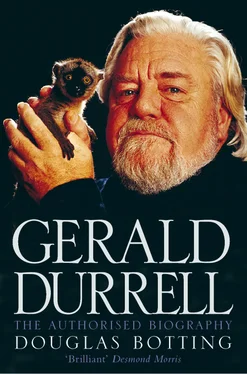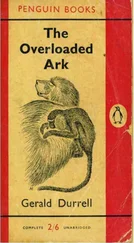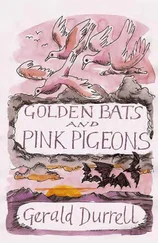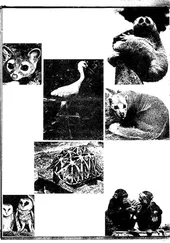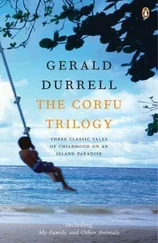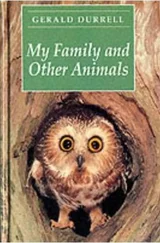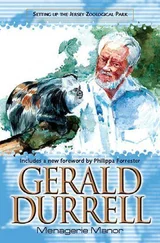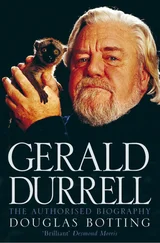Theo was no mere pedant, with a kleptomaniac gift for collecting sterile, unrelated facts. He was a true polymath, who related the phenomena of past and present existence in a master synthesis, a grand vision which had its feet firmly planted in science but its head peering speculatively among the clouds. ‘Although the classroom basics of biology were a closed book to me,’ Gerald admitted to a friend in his middle age, ‘walks with Theo contained discussions of everything from life on Mars to the humblest beetle, and I knew they were all part and parcel, all interlocked.’
On top of all this, Theo Stephanides bestrode the iron curtain between art and science, for he was not only a doctor and a biologist, but a poet whose friends included some of Greece’s leading poets. ‘If I had the power of magic,’ Gerald once remarked, ‘I would confer two gifts on every child – the enchanted childhood I had on the island of Corfu, and to be guided and befriended by Theodore Stephanides.’ Under Theo’s tutelage Gerald became more than a juvenile version of a naturalist in the classic nineteenth-century mould, more even than a straightforward zoologist of the kind turned out by the British universities of the era – though that was what he was to put as his profession in his passport. For Theo not only taught him what biological life was and how it worked, but imbued him with two principles regarding the role of man in the scheme of things. The first was that life without human intervention maintained its own checks and balances. The second was that the proper role of mankind among living things was omniscience with humility – and the greater of these two was humility.
‘Not many young naturalists have the privilege of having their footsteps guided by a sort of omnipotent, benign and humorous Greek god,’ Gerald would recall. ‘Theodore had all the very best qualities of the early Victorian naturalists, an insatiable interest in the world he inhabited and the ability to illuminate any topic with his observations and thoughts. His wide interests are summed up by the fact that (in this day and age) he was a man who had a microscopic water crustacean named after him, as well as a crater on the moon.’
From 1935 to 1939 Theo and his wife Mary visited the Durrells once a week, arriving after lunch and leaving after dinner. Their young daughter Alexia, often ailing, was usually left at home with her French nanny, because Theo was jealous of his afternoons with Gerald, who was like a son to him. For if Gerald was fortunate to have encountered such a gifted tutor in such a place at such a time in his life, Theodore was no less fortunate to have found an acolyte so innately endowed with responsive gifts of his own. Quite apart from his boundless energy and enthusiasm, his inexhaustible spirit of enquiry – remarkable for one so young, noted Theo – the boy had all the essential qualities of a naturalist. Patience, for a start. He could remain perched in a tree for hours on end, utterly still, utterly enthralled, as he watched the comings and goings of some small creature. Even Nancy, no naturalist, saw this special quality in him: ‘He had an enormous patience when he was very young. He used to make lassoes for catching lizards – lassoes of grass – and he would stay hours crouched in front of a little hole where he knew the lizard was, and then he would pull the noose tight and lasso it.’
Theo also discerned that Gerald lacked the arrogance that most human beings brought to their encounters with animals. Animals, Gerald felt by instinct, were his equals, no matter how small, or ugly, or undistinguished; they were, at a level beyond the merely sentimental, his friends and companions – often his only ones, for he had no great rapport with other children. And the animals, in their turn, sensed this, and responded accordingly, not just when he was a boy on Corfu but throughout all the years of his life.
By corollary, it followed in Gerald’s mind that it was a fundamental moral law that all species had an equal right to exist, this at a time when most human societies observed no ethical principles applicable to living things outside of humankind. It also followed that he had difficulty pursuing the study of natural history in the way that was the common practice of the period: that is by snuffing the life out of living things in order to examine, classify and dissect them in death. ‘Live with living things, I say,’ he was later to declare, ‘don’t just peer at them in a pool of alcohol.’ Gerald, in other words, was a behavioural zoologist (or ethologist) from the very start, and natural history for him was the study of living things – all too evidently living, as his family were to find out soon enough.
The family’s first winter came, coolish and very wet. By now Larry and Nancy, seeking the wilder, lonelier shores of the island, had moved up to Kalami, a remote hamlet on the north-east coast of Corfu, where they took a single-storey, whitewashed fisherman’s house – the White House – on the edge of the sea overlooking a small bay, with the barren hills of Albania only a couple of miles away across the straits. The winter rain in Corfu was almost tropical in density, the sea pounded on the rocks below the house, and the only heating was some smouldering logs in the middle of the room.
When nineteen-year-old Alex Emmett, a family friend who had been at school with Leslie, arrived to join the Durrells for their first Christmas at the Strawberry-Pink Villa, he found Mother still downing gin, Leslie an aimless, rootless, mother-fixated castaway, and Gerry utterly absorbed in his trapdoor spiders and his natural history lessons with Theo Stephan-ides. But for Theo, Emmett reckoned, young Gerry might easily have become a drifter like Leslie.
Having arrived for Christmas, Emmett stayed on for the family’s first full-blown spring on Corfu. It was to prove a season of singular magic. Gerald observed it through eyes round with wonder. The whole island was ‘flower-filled, scented and a-flutter with new leaves’. The cypress trees were now covered with a misty coat of greenish-white cones. Waxy yellow crocuses tumbled down the banks and blue day-irises filled the oak thickets. Gerald recorded: ‘It was no half-hearted spring, this; the whole island vibrated with it as though a great, ringing chord had been struck. Everything and everyone heard it and responded. It was apparent in the gleam of flower-petals, the flash of bird wings and the sparkle in the dark, liquid eyes of the peasant girls.’
The family responded to the spring in their different ways. Leslie blazed away at turtle-doves with his guns. Lawrence bought a guitar and a large barrel of strong red wine and sang Elizabethan love songs which induced a mood of melancholy. Margo perked up, bathed frequently and took an interest in a good-looking but boring young Turk – not a popular choice on a Greek island.
Gerald’s excursions took on an even greater range and interest when, in the summer of 1936, the family moved to another villa on the far side of Corfu town. According to Gerald, it was Larry who provoked the move. He had invited some friends to come to stay on Corfu – Zatopec the poet (an Albanian whose real name was Zarian), three artists called Jonquil, Durant and Michael, and the bald-headed Melanie, Countess of Torro – and he wanted Mother to put them up in the Strawberry-Pink Villa. Since the villa was barely big enough for the family, let alone an untold number of guests, Mother’s circuitous logic decided that the easiest solution was to find a bigger place. In any case, the Strawberry-Pink Villa never had a bathroom worthy of the name, only a separate washroom and a primitive toilet in the grounds, which alone was a compelling enough reason to move on.
The new house, which Gerald was to dub the Daffodil-Yellow Villa, was a huge Venetian mansion called Villa Anemoyanni, after the family who had owned it until recently. It stood on a modest eminence set back from the sea at a place called Sotoriotissa, near Kondokali, overlooking Gouvia Bay to the north of Corfu town. From the attic the children could watch the once-weekly Imperial Airways flying-boat splash down in the bay below. The house had stood empty for three years; it had faded green shutters and yellow walls, and was surrounded by neglected olive groves and untended orchards of lemon and orange trees. Gerald recalled:
Читать дальше
